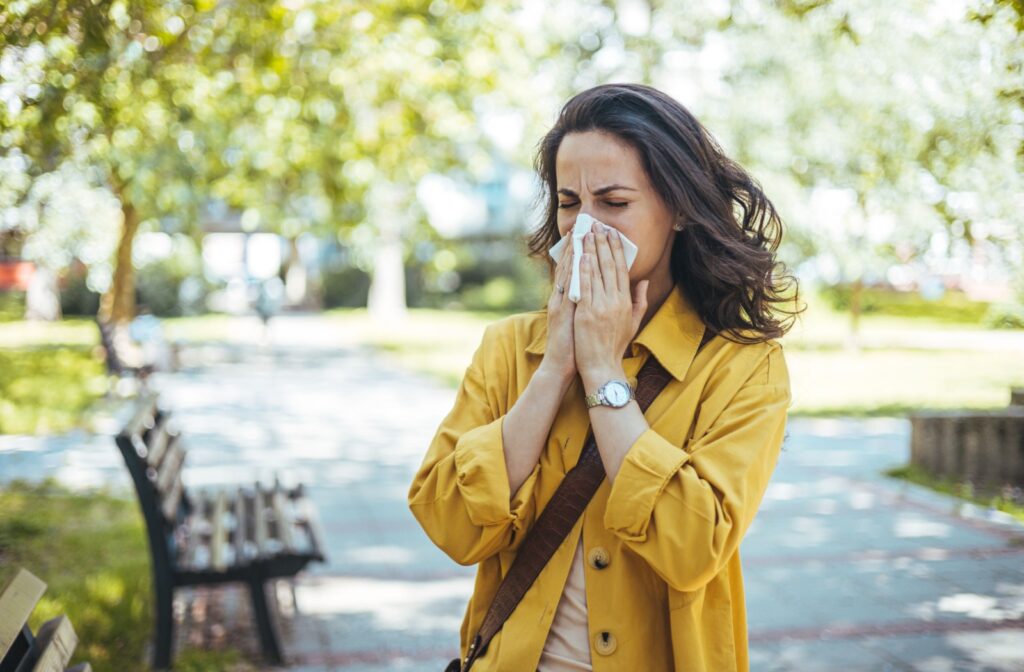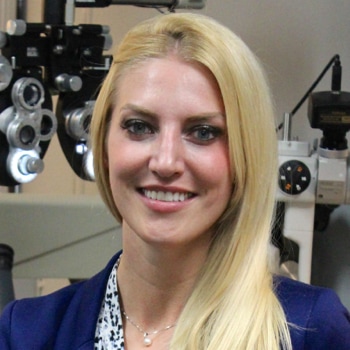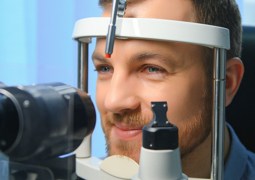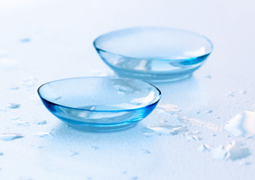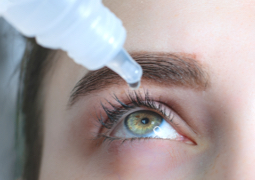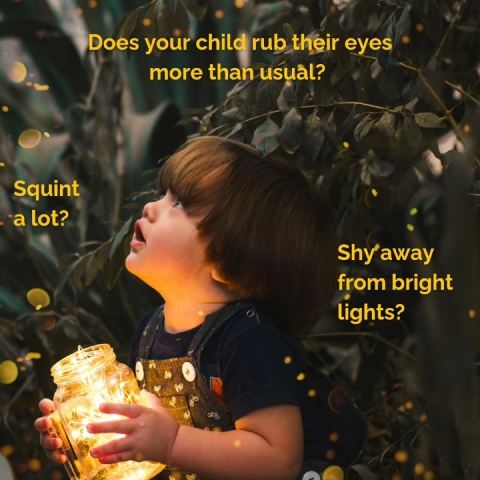When you catch a cold, you probably expect the usual lineup of symptoms like a stuffy nose, a nagging cough, and a sore throat. But you might be surprised to find your eyes feeling just as unwell as the rest of you. In fact, it’s common to experience eye irritation, watering, or redness when you’re under the weather.
Yes, the common cold can directly affect your eyes. In some cases, colds may even lead to viral pink eye. Understanding this connection can help you manage your symptoms and feel more comfortable while you recover.
How a Cold Connects to Your Eyes
Your eyes, nose, and throat are all part of an interconnected system. The germs that cause a cold can travel easily through these passages. When you’re sick, your body works hard to fight off the virus, often leading to inflammation and congestion in your sinuses.
This sinus pressure can build up behind your eyes, causing them to feel achy or tender. Additionally, it’s easy to transfer germs from your hands to your eyes by rubbing them, which can introduce the virus directly to the surface of your eyes.
Common Eye Symptoms with a Cold
When a cold virus settles in your eyes, it can cause a range of symptoms. Most are temporary and mild, but they can certainly add to your overall discomfort. Knowing what to look for can help you identify what’s going on.
Red, Itchy, or Watery Eyes
General irritation is a frequent complaint when you have a cold. You might notice your eyes are constantly watering, as if you’re about to cry. They may also feel itchy or have a slight burning sensation, and they may also look red or bloodshot due to inflammation.
Pink Eye & Colds
In some cases, colds may lead to viral conjunctivitis, often called pink eye. This condition is contagious and occurs due to infection of the thin, clear membrane covering your eye. Symptoms of pink eye include:
- A pink or red colour in the white of your eye
- Clear, watery discharge
- Eyelids that are crusty or stuck together in the morning
- A gritty feeling, like something is in your eye
Puffy Eyelids & Light Sensitivity
The inflammation from sinus congestion can cause fluid to build up around your eyes, making your eyelids look swollen or puffy. You may also find that bright lights are more bothersome than usual. This light sensitivity often accompanies the headaches that can come with being sick.
Tips for At-Home Care & Prevention
While your body’s immune system does the heavy lifting, you can take simple steps to soothe your eyes and prevent germs from spreading. A little at-home care can make a big difference in your comfort.
Soothe Your Eyes
Gentle care can help relieve irritation and reduce swelling. While they won’t outright cure your cold, they can make the symptoms more manageable:
- Apply a cool, damp cloth over your closed eyes for a few minutes at a time.
- Use preservative-free lubricating eye drops to help flush out irritants and add moisture.
- Avoid rubbing your eyes, as this can make the irritation worse and spread germs.
- If you wear contact lenses, switch to your glasses until your eyes feel better to reduce risks.
Practice Good Habits
Good hygiene is always important, but it’s especially key when you’re sick. Preventing the spread of germs protects your eyes and the people around you. Small changes can help contain the virus and support a quicker recovery.
- Wash your hands frequently with soap and warm water.
- Change your pillowcases, bedsheets, and towels daily to avoid reinfection.
- Do not share personal items like towels, makeup, or eye drops with others.
- If only one eye is affected, use a separate towel for that side of your face.

How Long Cold-Related Eye Symptoms Last
Most eye symptoms that accompany a cold are temporary and resolve as your cold gets better. For many people, eye irritation and viral pink eye clear up on their own without specific treatment.
It’s common for symptoms to start in one eye and spread to the other, especially if you touch your eyes often. As your immune system defeats the cold virus, your eye symptoms should gradually improve. If they stick around longer than your other cold symptoms, it may be a sign to check in with an eye care professional for a comprehensive eye exam.
When to See Your Family Eye Doctors in Calgary
While most cold-related eye problems are mild, some symptoms can point to a more significant issue. It’s a good idea to seek a professional opinion if your symptoms don’t improve or if they seem to be getting worse. Our team of eye doctors in Calgary is here to help assess your eye health.
Look for These Signs
Pay close attention to how your eyes feel and look. While many symptoms can be managed at home, certain signs can indicate a more serious problem that might qualify as an eye emergency. If you experience any of the following, it’s time to book an appointment with an optometrist to get a clear picture of what’s happening.
- Any changes in your vision, such as blurriness
- Moderate to severe eye pain
- A thick, yellow or green discharge from your eyes
- Intense sensitivity to light that makes it hard to keep your eyes open
- Symptoms that don’t start to improve after about a week
Keep on Top of Your Eye Health
Dealing with a cold is enough of a hassle without adding eye discomfort to the mix. If you have any concerns about your eye health, our team at Calgary Family Eye Doctors is ready to help you find clarity. Book your appointment with us today.


